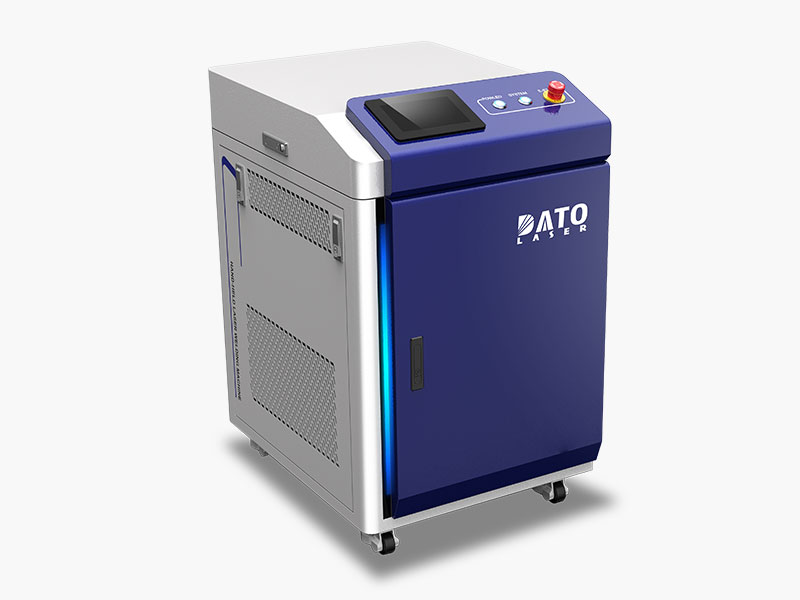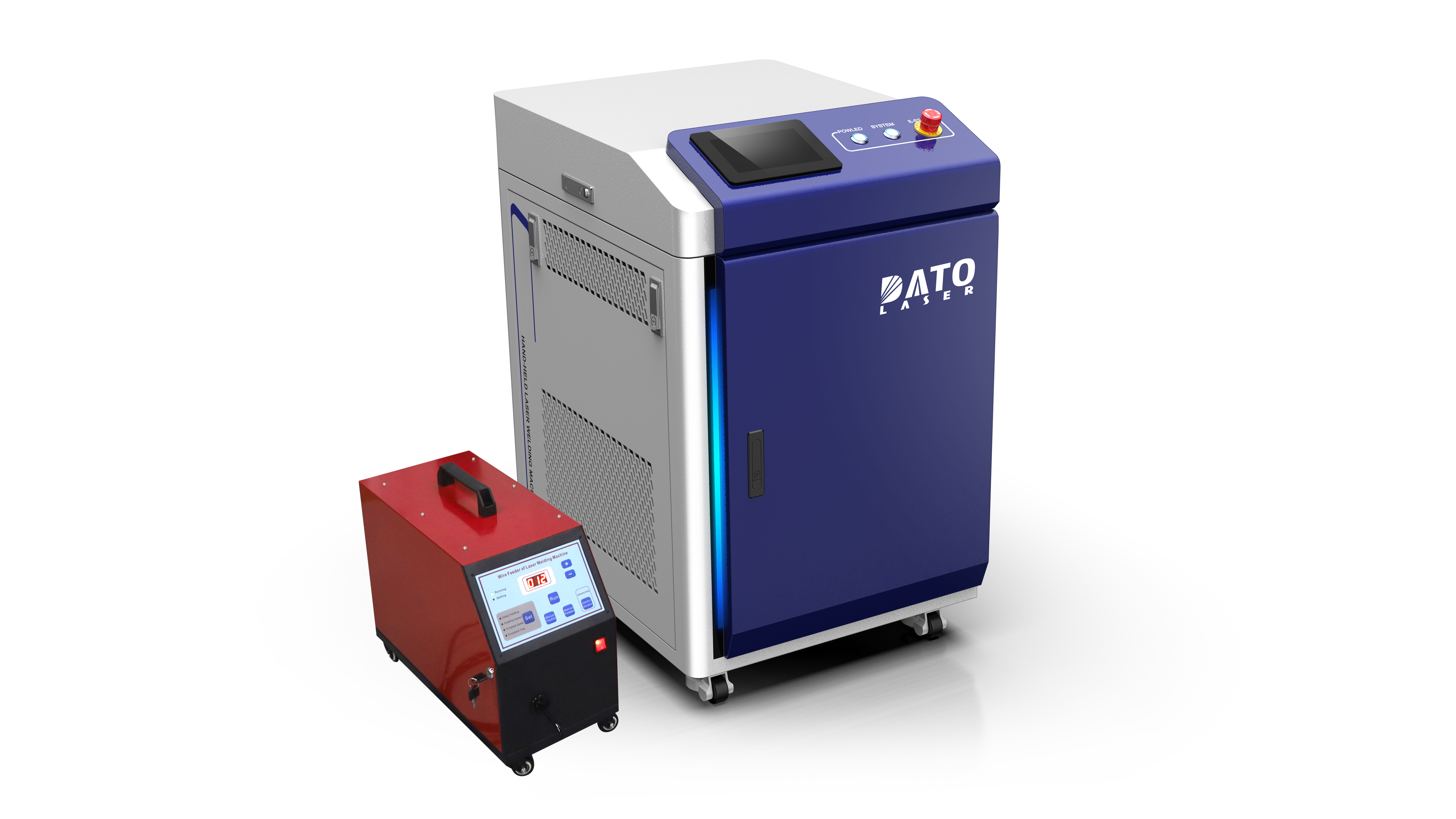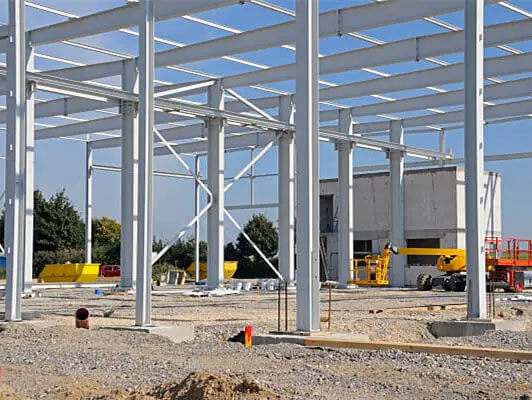How much does a laser welding machine cost?


Understanding Laser Welding Machine Investments: A Comprehensive Cost Guide
Introduction to Laser Welding Solutions
The investment in laser welding technology represents a significant decision for any business. While specific pricing varies based on numerous factors, understanding the different types of laser welding machines and their value propositions helps make an informed decision. DATO's range of solutions, from handheld units to advanced robotic systems, caters to diverse manufacturing needs and budgets.
Handheld Laser Welding Solutions
The handheld laser welding system represents the most accessible entry point into laser welding technology. The DT-HJ series exemplifies this category with its remarkable combination of portability and performance. These compact units integrate advanced fiber laser technology with intuitive controls, making them particularly suitable for small to medium-sized operations. The ergonomic design ensures operator comfort during extended use, while the advanced beam control system maintains consistent weld quality across various applications.
Versatile 3-in-1 Laser Systems
DATO's DT 3-in-1 laser system revolutionizes manufacturing efficiency by combining welding, cutting, and cleaning capabilities in a single unit. This integrated approach significantly reduces the overall investment compared to purchasing separate machines for each function. The unified control system streamlines operator training requirements, while the consolidated maintenance program simplifies upkeep procedures. The space-efficient design proves particularly valuable for facilities with limited floor space, offering maximum functionality within a minimal footprint.

Advanced Robotic Welding Systems
The DT-HJR robotic laser welding system represents the pinnacle of automated welding technology. These sophisticated systems incorporate advanced motion control and precise beam manipulation capabilities, enabling complex welding patterns with exceptional consistency. The robotic integration dramatically reduces labor requirements while maintaining superior quality standards across extended production runs. The system's flexibility allows for quick adaptation to different product specifications, making it ideal for high-volume manufacturing environments.
Understanding Value Factors
The true value of laser welding systems extends beyond their initial cost. Modern systems achieve remarkable material efficiency through precise beam control, significantly reducing waste compared to traditional welding methods. Energy consumption optimization through advanced power management systems contributes to lower operational costs. The automated nature of these systems reduces labor requirements while maintaining consistent quality standards throughout production runs.
Technology Considerations
DATO's laser welding systems incorporate cutting-edge technology across all models. The power delivery systems are optimized for specific applications, from the precise control needed in handheld units to the high-power capabilities required for industrial robotic systems. Advanced control interfaces combine intuitive operation with comprehensive monitoring capabilities, ensuring optimal performance while maintaining user-friendly operation.
Long-Term Investment Benefits
Investing in laser welding technology yields substantial long-term advantages. The enhanced production capabilities enable faster processing speeds and greater material versatility, allowing businesses to expand their service offerings. Improved precision and consistency reduce quality control issues, while automated features streamline workflow efficiency. These systems typically demonstrate excellent durability, maintaining high performance levels over extended operational periods.
Support and Service Value
DATO's commitment to customer success extends beyond equipment sales. Our comprehensive support program includes detailed installation assistance and thorough operator training. Regular maintenance services ensure optimal system performance, while technical consultation helps customers maximize their equipment's potential. This ongoing support structure helps protect the investment value while optimizing operational efficiency.
Making the Right Choice
Selecting the appropriate laser welding system requires careful consideration of current requirements and future needs. The assessment process should evaluate production volumes, material types, quality standards, and automation preferences. DATO's technical team provides expert guidance throughout this process, ensuring customers select systems that align with their operational requirements and budget constraints.

Conclusion
Investing in a laser welding system represents a strategic decision for business growth and capability enhancement. While the initial investment varies based on system type and capabilities, DATO and Leapion's range of solutions ensures businesses can find appropriate technology matching their requirements and budget constraints. The long-term benefits of improved efficiency, quality, and capabilities often justify the investment in advanced laser welding technology.
For detailed information about specific models and capabilities, we encourage consultation with our technical team to determine the most suitable solution for your unique requirements. Our commitment to providing value-driven solutions helps ensure your investment aligns with both current needs and future growth potential.
Related Blogs
-
 Exploring the Safety, Precision, and Industrial Benefits of Laser Surface CleaningIn today’s fast-paced industrial world, where quality, efficiency, and sustainability are top priorities, manufacturers are constantly seeking better ways to clean metal surfaces without compromising material integrityBlog
Exploring the Safety, Precision, and Industrial Benefits of Laser Surface CleaningIn today’s fast-paced industrial world, where quality, efficiency, and sustainability are top priorities, manufacturers are constantly seeking better ways to clean metal surfaces without compromising material integrityBlog -
 A Complete Guide by DATO and LeapionIn modern industry, surface preparation and maintenance play a crucial role in achieving high-quality manufacturing results. Laser cleaning machines have emerged as one of the most innovative, efficient, and environmentally friendly tools for removing contaminantsBlog
A Complete Guide by DATO and LeapionIn modern industry, surface preparation and maintenance play a crucial role in achieving high-quality manufacturing results. Laser cleaning machines have emerged as one of the most innovative, efficient, and environmentally friendly tools for removing contaminantsBlog -
 Laser cleaning machines are revolutionizing industrial surface cleaning by offering a faster, safer, and more eco-friendly alternative to traditional methods. Whether removing rust, paint, oil, oxide, or other surface contaminants, laser cleaning has become a cutting-edge solution in manufacturing,Blog
Laser cleaning machines are revolutionizing industrial surface cleaning by offering a faster, safer, and more eco-friendly alternative to traditional methods. Whether removing rust, paint, oil, oxide, or other surface contaminants, laser cleaning has become a cutting-edge solution in manufacturing,Blog -
 Introduction: Transforming EV Battery Manufacturing Through Laser TechnologyThe electric vehicle revolution has accelerated dramatically over the past decade, bringing with it unprecedented challenges and opportunities in battery manufacturing. As global automakers commit billions to electrificationBlog
Introduction: Transforming EV Battery Manufacturing Through Laser TechnologyThe electric vehicle revolution has accelerated dramatically over the past decade, bringing with it unprecedented challenges and opportunities in battery manufacturing. As global automakers commit billions to electrificationBlog













